The Hell of Solitary Confinement
65 state inmates describe mental harm, deprivation, suicide attempts.
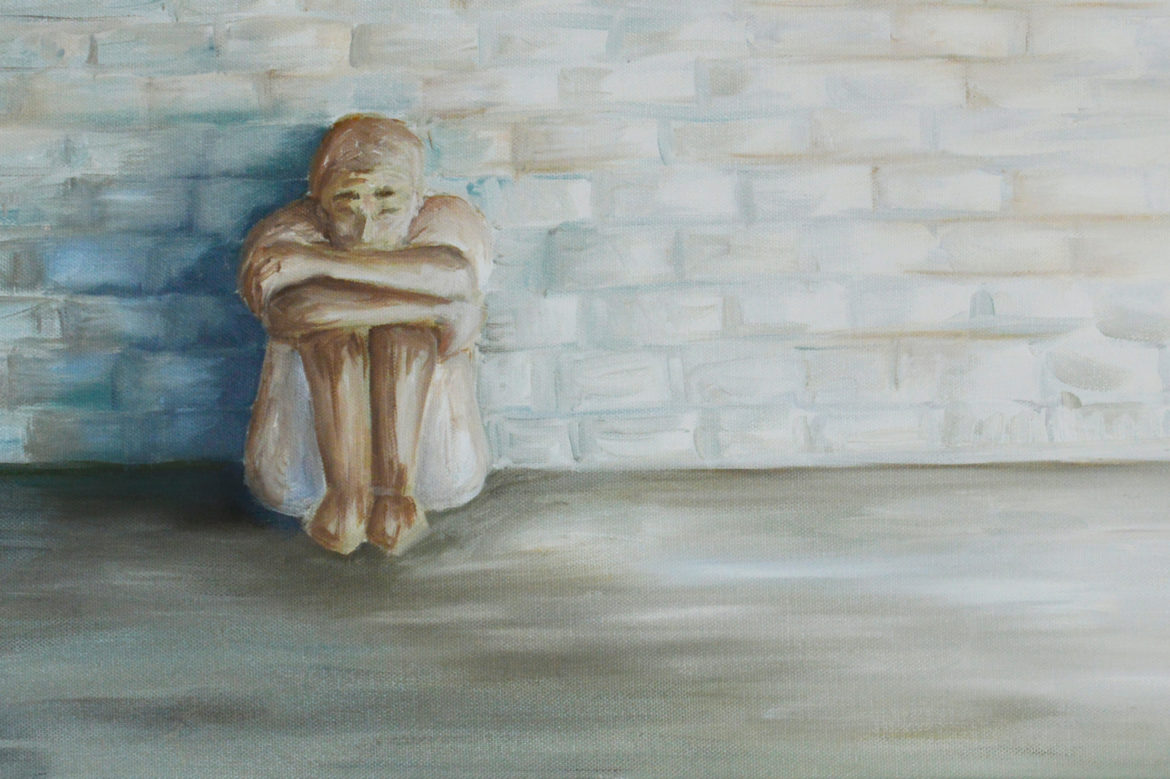
About 100 prisoners in Wisconsin are currently held in administrative confinement— a little-known category of solitary with no specified end date. A United Nations expert on human rights said that more than 15 days in solitary can be considered torture. Painting by Emily Shulaw for the Wisconsin Center for Investigative Journalism.
Waupun Correctional Institution inmate Cesar DeLeon said he has punched the wall until his fist is bloody to give himself “a sense of reality” during 15 years in prison in which he has rotated in and out of solitary confinement. Brandon Christian said he fantasizes about the violence he will commit if he ever leaves solitary, where he has been for more than seven years. One time, allowed additional time out of his cell for good behavior, Christian attacked another inmate.
“Someone was talking crap about me and I didn’t know who so I just picked someone and stabbed him,” Christian, who is serving time at the Wisconsin Secure Program Facility in Boscobel, wrote in response to a survey by the Wisconsin Center for Investigative Journalism.
After two and a half years in isolation — spending at least 22 hours a day alone in a tiny, solid-walled cell — fellow Boscobel prisoner Ernesto Cervantes wrote in response to the survey that he is no longer capable of “normal human interaction.”
“I have not been able to function properly in a social setting,” Cervantes, 35, said of his experience after release from administrative confinement, a status with no specified end date. “I think others are talking about me and feel watched. I also feel like I have lost proper comprehension as when people are speaking to me it sounds like gibberish noise.”
These are some of the voices of Wisconsin prisoners kept in administrative confinement— a little-known category of solitary that the state Department of Corrections describes as “an involuntary non-punitive status” for inmates who pose “a serious threat to life, property, self, staff or other inmates, or to the security of the facility.”
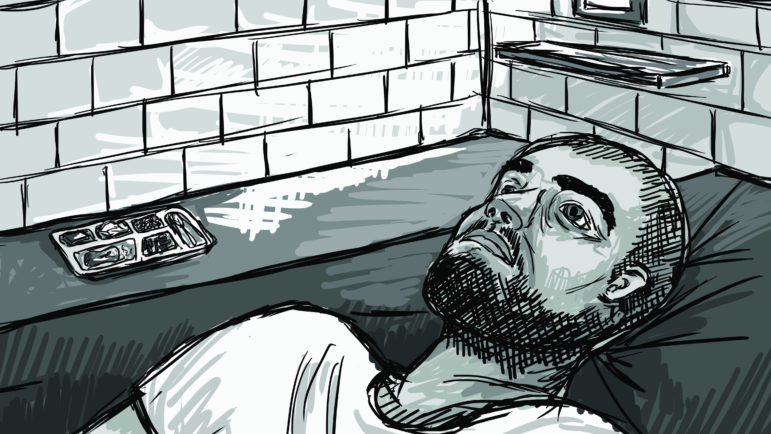
Prisoners in administrative confinement have no human contact at least 22 hours a day. Most described feelings of isolation, hopelessness, anxiety or paranoia. Illustration by Emily Shullaw for the Wisconsin Center for Investigative Journalism.
The agency says these inmates are so dangerous that they must be confined for months, years — even decades — in a cell the size of a parking space with no human contact at least 22 hours a day.
State Department of Corrections officials denied reporters’ requests to interview inmates in person about their experiences in administrative confinement, so the Center mailed surveys to more than 100 who had been held in 2016.
The Center’s survey — conducted in the wake of an inmate hunger strike launched in June aimed at ending long-term solitary confinement in Wisconsin — asked about prisoners’ living conditions, mental health status, whether they received regular meals and whether they had committed or been a victim of violence while in administrative confinement.
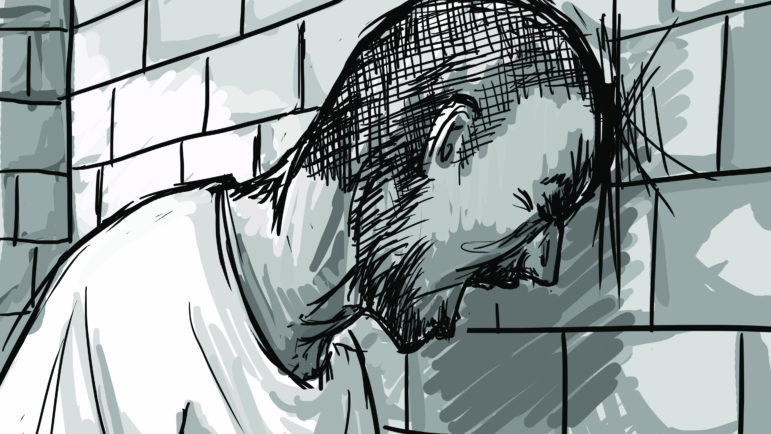
Inmates in administrative confinement reported sleep deprivation from screaming and banging from other inmates and perpetual lighting. Illustration by Emily Shullaw for the Wisconsin Center for Investigative Journalism.
Sixty-five inmates, many of whom have committed horrific crimes including multiple murders, violent attacks and sexual assault, responded to the surveys.
One respondent to the Center’s survey was in solitary for about 28 years; another has served 20 years.
The results of the survey were stark:
- Ten inmates reported attempting suicide while in administrative confinement. One said administrative confinement “makes you numb, violent, hateful, loud, disrespectful (and) suicidal.” Most described feelings of isolation, hopelessness, anxiety or paranoia.
- Of the 65 respondents, 26 claimed they have had medications or medical devices withheld or threatened to be withheld by security staff who distribute prescriptions or that they had overheard it happening to other inmates in solitary.
- More than a third of the respondents — 28 inmates — said they had been treated violently by other inmates or prison staff; 13 acknowledged harming or threatening to harm staff members or other inmates.
- Several described sleep deprivation from screaming and banging from other inmates and perpetual lighting.
- Thirteen inmates had food complaints, with some saying guards sometimes failed to deliver meals or that portions were inadequate, leaving them hungry.
One Wisconsin Secure Program Facility prisoner, Eddie King, 49, reported a positive reaction, saying administrative confinement gives inmates “the opportunity to change their behavior and thinking.”
How to manage such violent or non-compliant inmates — without worsening their behavior or mental health problems — is a big challenge for prison systems. Because of the negative effects of long-term indefinite solitary confinement, Colorado has largely ended this practice, which a top United Nations expert has said is equivalent to torture after 15 days.
We interviewed 65 inmates held in administrative confinement. Here’s what they say their lives are like. Video produced by Coburn Dukehart/Wisconsin Center for Investigative Journalism
In 2016, seven states — California, Connecticut, Colorado, Delaware, Maryland, Nebraska and New Jersey — approved some restrictions on solitary or new reporting requirements, although New Jersey Gov. Chris Christie vetoed his state’s legislation, which would have prohibited use of solitary for non-disciplinary reasons.
In 2015, the Wisconsin Department of Corrections implemented policies — although not all inmates were aware of the changes — to reduce the amount of time inmates spend in solitary for disciplinary reasons and narrowed the types of offenses that can land them there. It also has made moves to remove prisoners with serious mental illnesses from solitary and to require that psychological staff provide input when such inmates are facing placement in solitary, spokesman Tristan Cook said.
The result is a large drop in inmates in all forms of solitary confinement from a high of 1,362 in March 2014 to 1,073 as of Feb. 28, Cook said. Of those, 93 were in administrative confinement.
“DOC has made significant reforms to the restrictive housing process with the goal of minimizing … (its) usage for all inmates and eliminating the use of restrictive housing for inmates with serious mental illnesses,” he wrote in an email.
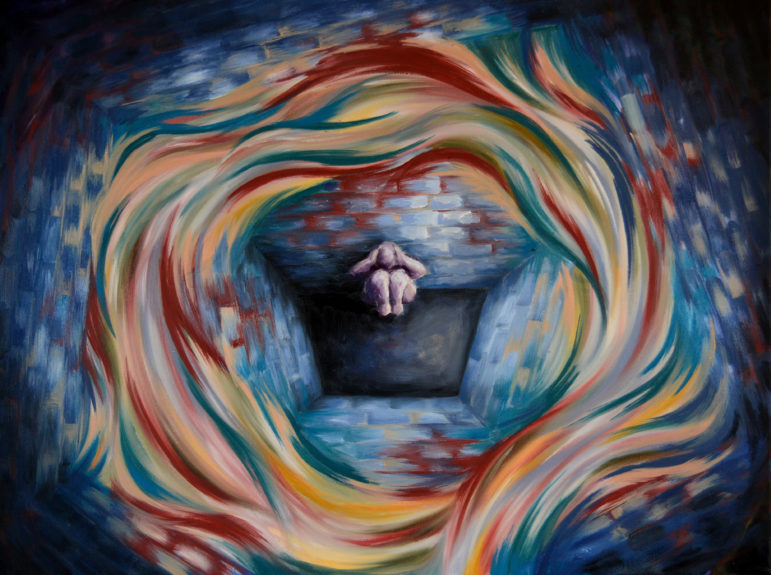
The Department of Corrections has made moves to remove prisoners with serious mental illnesses from solitary and to require that psychological staff provide input when such inmates are facing placement in solitary. Painting by Emily Shullaw for the Wisconsin Center for Investigative Journalism.
As of Oct. 1, 2015, Wisconsin held about 3.7 percent of its inmates in solitary confinement for at least 22 hours a day, 15 continuous days or more, compared to a national average of about 4.9 percent, according to a study released in November by the Association of State Correctional Officials and Yale Law School. The study, based on surveys of 48 correctional systems including the U.S. Bureau of Prisons, found that nearly all had made or were planning to make changes to reduce the use of isolation.
“While restricted housing once was seen as central to prisoner management, by 2016 many prison directors and organizations … have defined restricted housing as a practice to use only when absolutely necessary and for only as long as absolutely required,” the report found.

The interior of a solitary cell at the Wisconsin Secure Program Facility in Boscobel, Wis., seen during a media tour in 2001. Inmates may place mattress on floor which in turn creates a desk-like area for studies. Photo by Joseph W. Jackson III of the Wisconsin State Journal.
Wisconsin is one of 17 jurisdictions that told the ASCA/Yale survey it does not routinely track how long inmates are in solitary.
“Administrative segregation generally had no fixed endpoint, and several systems did not keep track of the numbers of continuous days that people remained in isolation,” the authors found. “In the 24 jurisdictions reporting on this question, a substantial number indicated that prisoners remained in segregation for more than three years.”
There are signs that Wisconsin is beginning to improve conditions for inmates held in solitary confinement. Gov. Scott Walker’s 2017-19 Department of Corrections budget request includes changes to solitary to boost mental health care and to allow some inmates with serious mental illnesses to spend up to 20 hours a week out of their cells for programming and recreation.
‘Prison within a prison’
Former Waupun prison psychologist Bradley Boivin said that the lack of an end date while in administrative confinement can be especially damaging to inmates’ mental health, creating a “prison within a prison.” The Center approached Boivin last year after inmates raised questions about why he had left DOC.
“Imagine being told you’re going to prison for five years or you’re going to prison for as long as we want to keep you there,” Boivin said. “That’s going to have two different impacts on the same person … The ambiguity of it creates additional levels of psychological distress for the inmates.”
Boivin said he resigned after trying unsuccessfully to make changes from within at Waupun.
“It wasn’t about correction at all,” he said. “It was about perpetual punitive behavior (towards the inmates). That’s what I couldn’t be a part of anymore, I guess.”
In solitary units, Boivin said, inmates receive clinical attention according to their mental health status. Individuals with the highest classifications are required to be seen once a week. Inmates with a classification of less severe mental illness are seen every two weeks. The brief sessions take place through the inmate’s cell door, allowing others to hear.
Boivin believes these check-ins, referred to by prisoners as “drive-bys,” are insufficient.
“There’s nothing clinical or therapeutic about (weekly check-ins) whatsoever. It’s really just a quick check-in,” Boivin said. “That’s it, they’ll say, ‘I’m fine,’ and you walk away.”

Brief clinical assessment sessions take place through the inmate’s cell door, allowing others to hear. Former prison psychologist Bradley Boivin believes these “drive-bys” are insufficient. Illustration by Emily Shullaw for the Wisconsin Center for Investigative Journalism.
These brief encounters are often the only routine clinical contact inmates in solitary confinement receive, he said. Boivin said at times when he attempted to set up individual sessions he got “pushback” from security.
“It (check-in) doesn’t come close to any sort of psychological service in the community, or any setting. It doesn’t really provide the opportunity for the clinician to address any psychological issues, any risk, in any meaningful way,” he said, adding there’s no privacy, loud noises and guards often are nearby.
“There’s no way to gather information about a person’s mental health condition … in two or three minutes,” he said, calling the practice “inadequate.”
Suicide attempts, drugs withheld
In the surveys, most inmates presented bleak descriptions of life in solitary confinement.
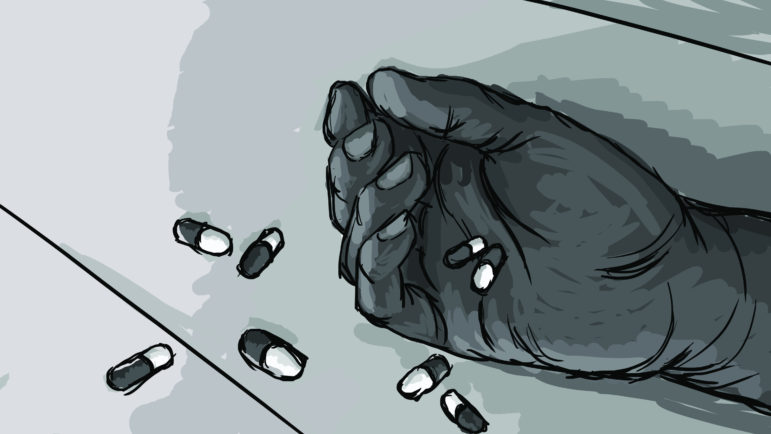
Ten inmates in our survey reported attempting suicide while in administrative confinement. Illustration by Emily Shullaw for the Wisconsin Center for Investigative Journalism.
“I’ve tried many times to hang myself with a sheet, overdose on medication. I start to see things or people who isn’t there; I talk to myself,” wrote Quenton Thompson, 35, who is serving a life sentence at the Boscobel prison for killing a pregnant girlfriend and her unborn child. “I feel as though people are trying to kill me. I hear voices in my head.”
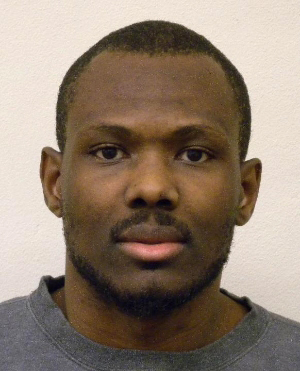
Shirell Watkins said he has tried twice to hang himself while in solitary confinement. Photo from the Wisconsin Department of Corrections.
Shirell Watkins, 37, said he has tried twice to hang himself while in solitary confinement. Watkins, who is serving a 25-year sentence for reckless homicide, said he has spent years in various forms of solitary at three institutions, most recently Green Bay Correctional Institution.
He described suffering from the effects of isolation, including “severe mental anguishment, depression, sleeplessness, high level of stress, constant self-communication, headaches, weight fluctuation, eye aches, hyper-reaction to situations/incidents, isolation/loneliness, short attention span, poor concentration and at times poor memory and difficulty concentrating.”
In early 2016, the Milwaukee Journal Sentinel reported that one staff member was fired, one resigned and another retired from the DOC-run Milwaukee County Secure Detention Facility after they were caught on audiotape taunting an inmate and withholding his medication. He was being held in solitary confinement.
Mark Smith, 47, currently housed at Boscobel, said he has had nine stints on suicide watch. He claims that when he becomes irritated, officers sometimes withhold his medications for conditions including intermittent explosive disorder, polysubstance dependence and antisocial personality disorder. For him, administrative confinement is “a total hell.”
Smith has been incarcerated since 2002 on burglary and recklessly endangering safety as a habitual criminal.
Manuel Salas, 30, wrote that he had attempted suicide a “number of times” over his 10 years in solitary, some of it spent in administrative confinement. Salas, who is serving time for arson and was released on extended supervision in August, said staff had retaliated against him by withholding medicine he takes for post-traumatic stress disorder, sleep and anxiety.
Thompson, the inmate at Wisconsin Secure Program Facility, described similar treatment.
“Each day I’m to take my medication, but some officers on first shift will pass me up while I’m at the door waiting for meds,” wrote Thompson, who said he has antisocial personality disorder and hears voices. “It just might be a day the officers feel like they wanna come to work just to give me a hard time.”
Boivin used to hear these kinds of complaints from inmates, and he usually did not believe them. But the psychologist said he witnessed it himself in 2015.
“The sergeant was really upset at a particular inmate,” Boivin said. “She said, ‘He’s a d—head, he doesn’t even deserve his meds,’ and I reported that.”
The problem, Boivin said, is that untrained non-medical staff should not be administering medicine. DOC has acknowledged the practice is “not acceptable,” requesting more than $1 million over two years for trained medical staff to administer medication at the embattled Lincoln Hills and Copper Lake juvenile prisons.
“Medication delivery by non-health care staff is recognized on a national level as an unsafe practice,” the agency said.
Cook did not answer questions about whether DOC is considering changes to how medicine is administered in Wisconsin’s adult prisons.
Suicide watch ‘humiliating’ for inmates
In Wisconsin, some of the harshest treatment is reserved for inmates who want to kill themselves. Boivin said he personally and professionally felt these suicide watch placements were more torturous than solitary confinement itself.
When inmates make suicidal threats or harm themselves, they can be placed in suicide watch, known as observation. Clinical staff make the final decision and are responsible for monitoring inmates in that status.

Some of the harshest treatment in solitary is reserved for inmates who want to kill themselves. Confined in a cell with a bed made of a concrete and steel slab with a thin rubber mat, the prisoner wears only a a paper security gown or a quilted security smock. Painting by Emily Shulaw for the Wisconsin Center for Investigative Journalism.
Once the inmate is taken into observation, he is confined in a cell with a bed made of a concrete and steel slab with a thin rubber mat. The prisoner wears a paper security gown or a quilted security smock. The lights are on 24 hours a day, and, initially, he is not allowed any property, even a book.
In extreme cases, inmates are strapped down, restrained at their shoulders, their wrists, their ankles and their knees, in an “eight-point restraint.” Boivin said he has seen inmates restrained for hours or days, nude except for a washcloth covering their genitals.
“It’s humiliating, it’s degrading,” Boivin said. “They’re just kind of there, like a tied down animal.”
In 2015, there were 80 inmates with serious mental illnesses in solitary who had a total of 132 placements in suicide watch, according to a DOC budget request.
Observation status can go on for weeks or months, Boivin said. After a couple of days, Boivin said the “decompensation” is noticeable. Inmates’ eyes become bloodshot and watery, and they can become aggressive, delirious and eventually “shut down.” Sounds of other inmates taunting statements such as “Just do it!” can be heard, he said.
Days filled with boredom and rage
Inmates were asked to describe a typical day in administrative confinement. Many wrote of repetitiveness, spending the entire day in bed or that the “days blur into one another.” Reading, watching TV, working out in their cells or the “rec cage,” and writing letters are some of the ways inmates keep busy.
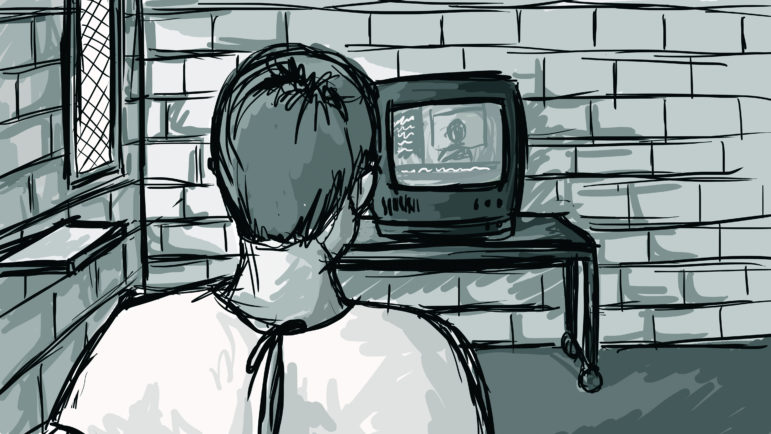
Many inmates reported that their days in solitary were monotonous and repetitive. Many said the overwhelming isolation takes over their daily lives. Illustration by Emily Shullaw for the Wisconsin Center for Investigative Journalism.
William Ledford, 54 — who is at Waupun serving 60 years for attempted homicide, armed robbery and other crimes as a repeat offender — detailed the monotony of his daily life.
“Wake up, read my Bible, watch the news, listen to some music, read, take a nap, have lunch, start the process all over again,” Ledford wrote. “Same thing over and over every day.”
He was in administrative confinement for about one and a half years for “repeated assaultive behavior” and “noncompliance with prison rules,” Cook said.
Some inmates say overwhelming isolation takes over their daily lives.
Eric Conner, 30, is at Boscobel serving 30 years on his most recent sentence after stabbing another inmate and injuring a correctional officer. Cook said in all, Conner has had 56 conduct reports since he was imprisoned in 2008 for murder. During his time in solitary, Conner wrote that he hears his victim telling him to kill or harm himself. “I’m stuck in the cell and have nothing to distract me from him,” he wrote.
Tony Caravella, 31, is serving 60 years on three counts of vehicular homicide. He reported being in administrative confinement for six months in 2016 at Wisconsin Secure Program Facility after spending years in solitary for repeated rule violations including assaulting another inmate.
“Administrative confinement has had effect on me for depression, anxiety and loss of self-worth and I crave human contact like a hug from my dad,” he wrote.
Before his incarceration, Caravella said he was not diagnosed with any mental illness, but now takes medications for depression, sleep, anxiety and post-traumatic stress disorder.
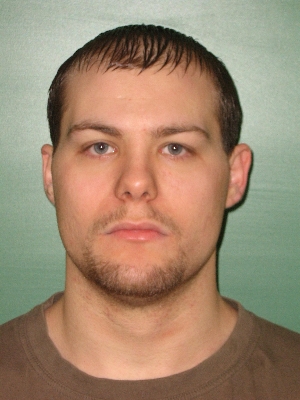
Brandon Christian said he fantasizes about the violence he will commit if he ever leaves solitary, where he has been for more than seven years. Photo from the Wisconsin Department of Corrections.
Christian, 29, said he has been in solitary confinement for more than seven years — including 3 ½ years in administrative confinement — while serving a 29-year sentence at Wisconsin Secure Program Facility for first-degree sexual assault with a dangerous weapon and armed burglary. He describes being “unfeeling,” adding, “Life has no point.”
“I pace my cell for hours thinking about all the horrible things I’ve done and the horrible things I will do,” Christian wrote.
“I have no choice but to listen to people screaming, banging on their doors, or otherwise making noise. I think about what I’d do to those people if these doors would open.”
If he were returned to the general population, Christian wrote, he would have “no problem” assaulting an officer.
Last on strike
For about seven months, DeLeon participated in the hunger strike. Although the state had been force-feeding him through a nasal tube, at other times, DeLeon said in a letter, he went several days without any food or water, risking kidney failure.
“My hands and feet feel like they are on fire,” the Waupun inmate wrote, adding later, “Things are going to end up bad.”
A clip of a video taken by the Wisconsin Department of Corrections shows prisoner Cesar DeLeon being administered a forced tube feeding in Waupun Correction Institution on June 30, 2016.
Karina DeLeon felt her brother’s hunger strike was futile.
“The truth is if something happens to him, the system will continue the same way it always has,” Karina DeLeon said in Spanish, speaking in the living room of her family’s Milwaukee home. “He will be gone, and it will be as if nothing happened.”
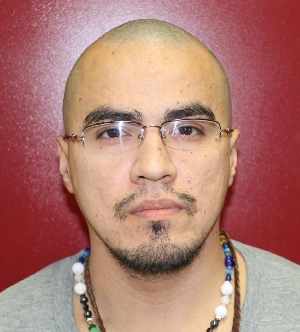
Cesar DeLeon, an inmate at Waupun Correctional Institution, participated in a hunger strike for about seven months to protest conditions in solitary confinement. Photo from the Wisconsin Department of Corrections.
DeLeon, 34, is serving a 55-year prison sentence on armed robbery and kidnapping charges. He also is facing trial for attempted homicide for stabbing a Columbia Correctional Institution staff member in 2014 with a scissors after he was denied a promotion at the prison library where he worked.
DeLeon’s violent behavior is what landed him in prison and what has kept him in various forms of solitary confinement for stretches during his 15 years in prison. At various times, he and his family have alleged that he has been mistreated by correctional officers, including a “use-of-force” incident on Dec. 5 that Cook said is under investigation.
Cook said DeLeon is in administrative confinement because of repeated assaultive behavior, security threat group activity, manufacture of weapons and other violations. “To date, he has refused to participate in programming that could result in his return to general population,” Cook wrote in an email.
During a video visit late last year, DeLeon showed a bruised arm to a reporter, saying the mark was from the choking, dragging and tasing he claimed to have experienced.
His mother, Rosa Landeros, visited him by video shortly after the alleged assault.
“He had memory loss and poor concentration, and that’s for how long he’s lasted without food,” Landeros said. “I saw him beat and in pain, his body was in pain. I saw him bad, truly bad.”
DeLeon said administrative confinement has no rehabilitative purpose. He called it a “torture technique.”
“It have deteriorated me psychologically, I’m constantly depress,” DeLeon wrote in response to the survey. “I punch the walls a lot. I do it until I bleed. I can’t understand why I have to do it, but the pain somehow gives me a sense of reality.”
The nonprofit Wisconsin Center for Investigative Journalism (www.WisconsinWatch.org) collaborates with Wisconsin Public Radio, Wisconsin Public Television, other news media and the UW-Madison School of Journalism and Mass Communication. All works created, published, posted or disseminated by the Center do not necessarily reflect the views or opinions of UW-Madison or any of its affiliates.
Cruel and Unusual
-
Jail Fees Can Leave Inmates in Debt
 Oct 4th, 2019 by Izabela Zaluska
Oct 4th, 2019 by Izabela Zaluska
-
Rules Violations Cause 40% of Prison Admissions
 Jul 3rd, 2019 by Izabela Zaluska
Jul 3rd, 2019 by Izabela Zaluska
-
Evers Faces Hurdles to Cutting Prisons
 Jul 1st, 2019 by Izabela Zaluska
Jul 1st, 2019 by Izabela Zaluska



















Had city leaders accepted a prison in Milwaukee in the 1980s, perhaps we would have a more humane, community-based correctional system. As it is, our current prison system is a disgrace. Thanks for the continuing coverage on this issue.